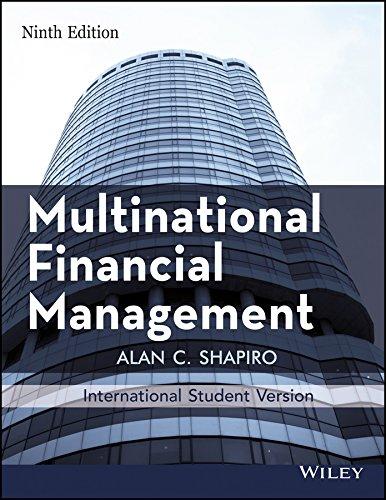11. Changes to the security market line The following graph plots the current security market line (SML) and indicates the return that investors require from holding stock from Happy Corp. (HC). Based on the graph, complete the table that follows: 20.0 16.0 12.0 Return on HC's Stock REQUIRED RATE OF RETURN (Percent) 6 1.0 RISK (Beta) 20 O X CAPM Elements Risk-free rate (TRF) Market risk premium (RPM) Happy Corp. stock's beta Required rate of return on Happy Corp. stock An analyst believes that inflation is going to increase by 3.0% over the next year, while the market risk premium will be unchanged. The analyst uses the Capital Asset Pricing Model (CAPM). The following graph plots the current SML. Calculate Happy Corp.'s new required return. Then, on the graph, use the green points (rectangle symbols) to plot the new SML suggested by this analyst's prediction. Happy Corp.'s new required rate of return is Value 2 CAPM Elements Risk-free rate (TRF) Market risk premium (RPM) 8.0% Happy Corp. stock's beta Required rate of return on Happy Corp, stock 2.0% An analyst believes that inflation is going to increal 1.1%% over the next year, while the market risk premium will be unchanged. The analyst uses the Capital Asset Pricing Model (CAPM). The follow plots the current SML. 2.2% Calculate Happy Corp.'s new required return. Then, omegraph, use the green points (rectangle symbols) to plot the new SML suggested by this analyst's prediction. Happy Corp's new required rate of return is Value CAPM Elements Risk-free rate (TRF) Market risk premium (RPM) Happy Corp. stock's beta Required rate of return on Happy Corp. stock An analyst believes that inflation is going to increa the Capital Asset Pricing Model (CAPM). The follow Calculate Happy Corp.'s new required return. Then analyst's prediction. Happy Corp.'s new required rate of return is Value 7.8% 4.5% over the next year, while the market risk premium will be unchanged. The analyst uses 6.0% plots the current SML. 10.8% aph, use the green points (rectangle symbols) to plot the new SML suggested by this CAPM Elements Value Risk-free rate (TRF) Market risk premium (RPM) Happy Corp. stock's beta Required rate of return on Happy Corp. stock 0.3 An analyst believes that inflation is going to increa the Capital Asset Pricing Model (CAPM). The follow 1.6 0% over the next year, while the market risk premium will be unchanged. The analyst uses h plots the current SML 2.3 graph, use the green points (rectangle symbols) to plot the new SML suggested by this Calculate Happy Corp.'s new required return. Then analyst's prediction. 1.0 Happy Corp.'s new required rate of return is Tool tip: Mouse over the points on the graph to see their coordinates. CAPM Elements Risk-free rate (TRF) Market risk premium (RPM) Happy Corp. stock's beta Required rate of return on Happy Corp. stock An analyst believes that inflation is going to increa the Capital Asset Pricing Model (CAPM). The follow Calculate Happy Corp.'s new required return. Then analyst's prediction. Happy Corp.'s new required rate of return is Value 8.0% over the next year, while the market risk premium will be unchanged. The analyst uses plots the current SML 10.0% aph, use the green points (rectangle symbols) to plot the new SML suggested by this 6.8% 7.2% An analyst believes that inflation is going to increase by 3.0% over the next year, while the market risk premium will be unchanged. The analyst uses the Capital Asset Pricing Model (CAPM). The following graph plots the current SML. Calculate Happy Corp.'s new required return. Then, on the graph, use the green points (rectangle symbols) to plot the new SML suggested by this analyst's prediction. Happy Corp.'s new required rate of return is Tool tip: Mouse over the points on the graph 11.0% ir coordinates. 25.3% 12.1% 7.7% G a REQUIRED RATE OF RETURN (Percent) 2 D 0.4 12 RISK (Beta) 08 16 20 11 New SML The SML helps determine the risk-aversion level among investors. The higher the level of risk aversion, the flatter Which of the following statements best describes a shift in the SML caused by increased risk aversion? The risk-free rate will remain constant. steeper The risk-free rate will decrease. The risk-free rate will increase. the slope of the SML















